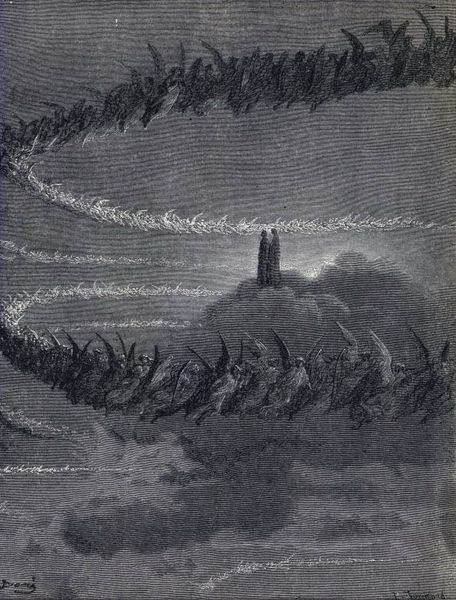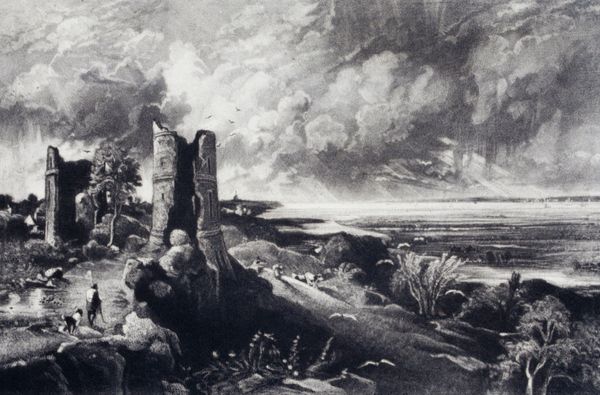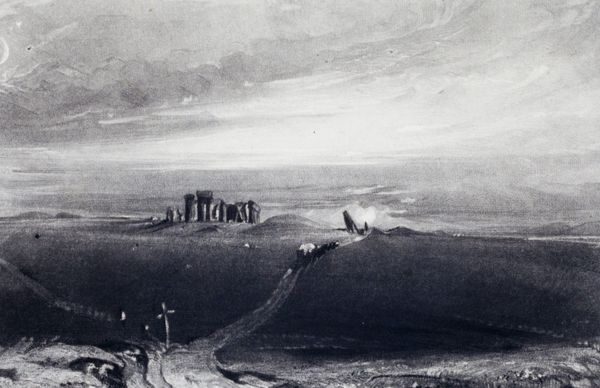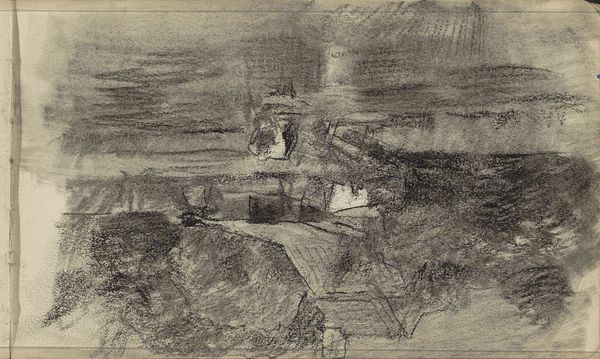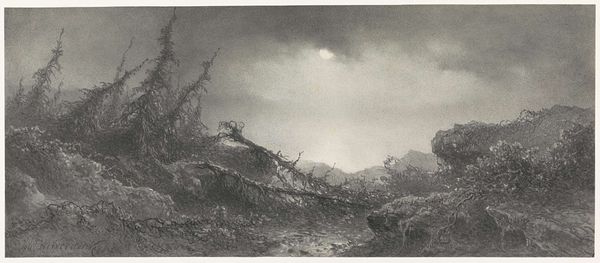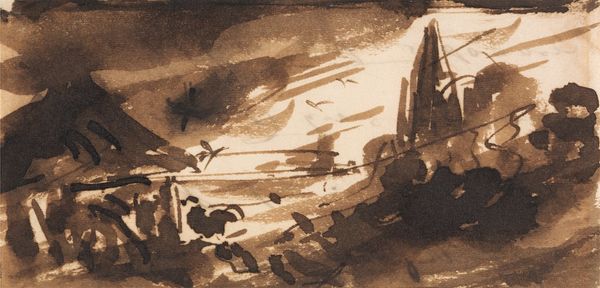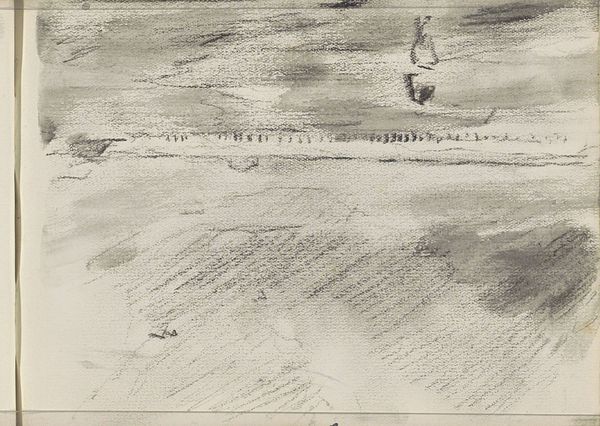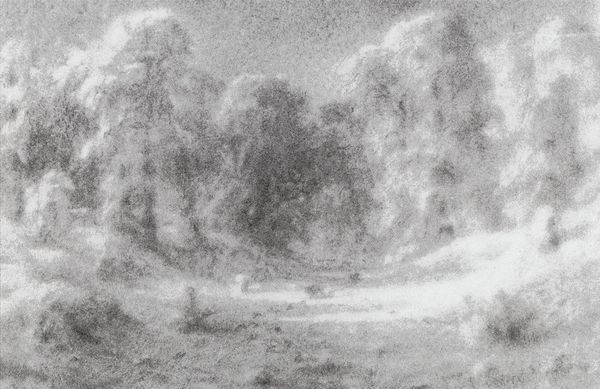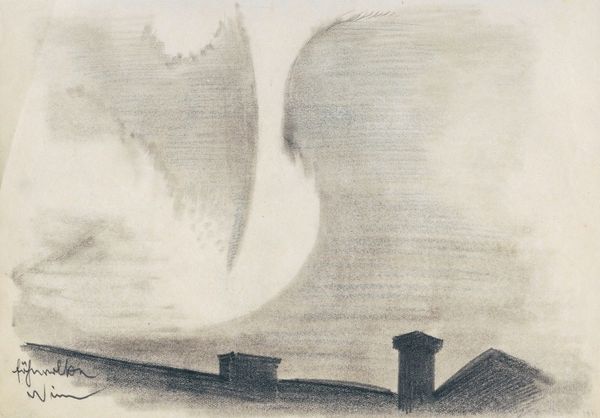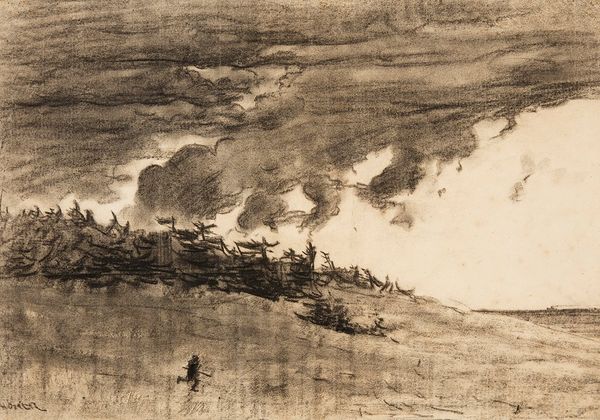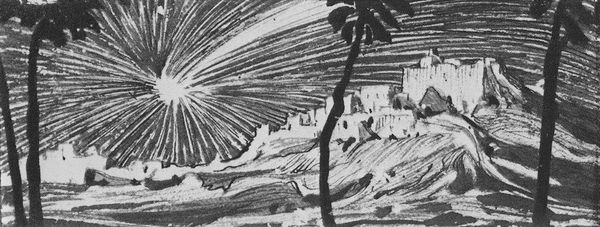
print, etching, mezzotint, graphite
# print
#
etching
#
landscape
#
charcoal drawing
#
romanticism
#
mezzotint
#
line
#
graphite
#
charcoal
#
graphite
Dimensions: 7 x 10 in. (17.78 x 25.4 cm) (plate)
Copyright: Public Domain
Curator: We’re now in front of John Constable’s "Summer Afternoon," a print made sometime between 1830 and 1855. It employs etching and mezzotint, along with graphite and charcoal lines. Editor: My immediate reaction is one of drama. The high contrast evokes a looming storm, but the light pushes through. It feels almost… theatrical, doesn’t it? Curator: Certainly, that's an apt observation. The mezzotint technique creates subtle tonal gradations that play out between light and shadow across the composition. Note how Constable manipulates value to create depth and atmosphere, characteristic of his style. Editor: And it is interesting that we should reflect on technique because, historically, Constable was deeply concerned with accurately capturing atmospheric effects. He spent considerable time studying the skies, making detailed cloud studies as if documenting a scientific phenomenon. This print suggests an engagement with naturalism, pushing beyond idealized landscapes. Curator: I agree. The dynamism is undeniable. Consider the strategic placement of the windmill against the dramatic sky, drawing the eye upwards. Or the almost sketch-like rendering of the figures. They serve not merely as narrative elements, but as structural devices that contribute to the work’s visual equilibrium. Editor: What also comes to my mind is Constable's public reception during this time. Although lauded today, some critics of the period found his style too… unfinished, perhaps too emotionally charged. There was still this tension, wasn't there, between embracing a more subjective experience and upholding traditional academic landscape painting. Curator: Indeed. "Summer Afternoon" can be seen as a part of that larger aesthetic debate. It sits somewhere between faithful representation and subjective interpretation, pushing the boundaries of the picturesque. Editor: It’s fascinating to see how social and cultural forces are reflected even within seemingly straightforward landscape scenes like this, revealing so much about a particularly compelling moment in art history. Curator: Absolutely. I appreciate how this close formal analysis deepens our understanding and unlocks its conceptual complexity. Editor: Yes, reflecting on the artwork’s historical setting definitely enriched my understanding, drawing me closer to appreciating this seemingly simple yet profoundly expressive piece.
Comments
No comments
Be the first to comment and join the conversation on the ultimate creative platform.

